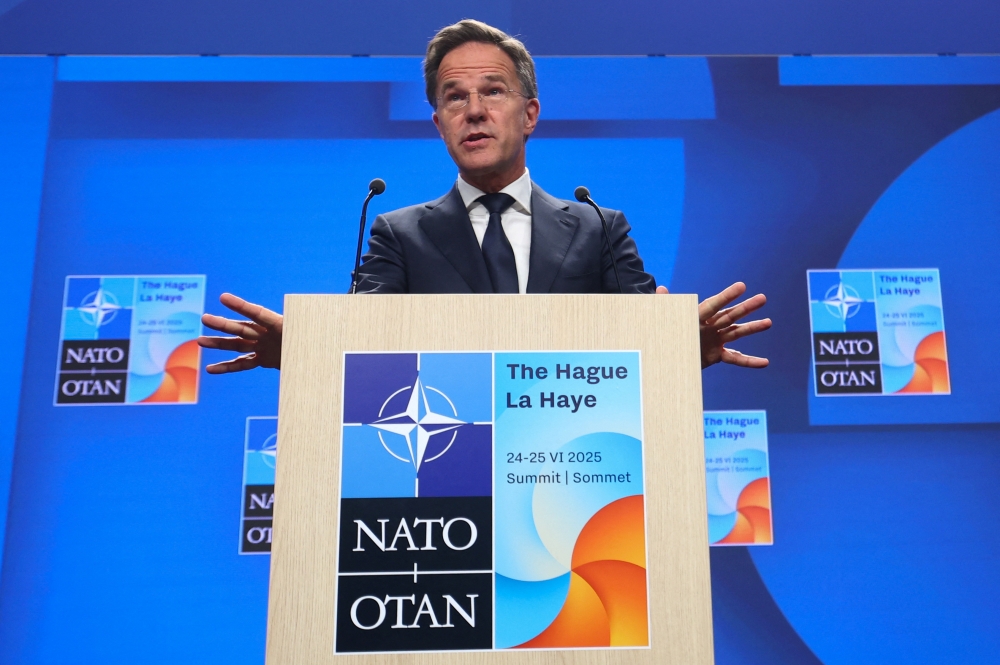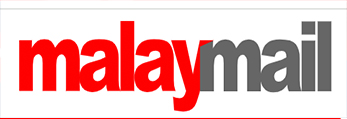BRUSSELS, June 25 — Nato leaders are expected to endorse a big new defence spending target at an alliance summit in The Hague otoday, as demanded by US President Donald Trump.
Here are some key questions and answers about the new target.
What are Nato leaders expected to approve?
They are expected to agree that Nato members should spend 5 per cent of their economic output — or Gross Domestic Product (GDP) — on core defence and broader defence and security-related investments.
That’s a hefty increase on the current goal of 2 per cent, which was approved at an alliance summit in Wales in 2014. But the new target will be measured differently.
Nato members will be expected to spend 3.5 per cent of their GDP on core defence such as troops and weapons — the items currently covered by the old 2 per cent target.
They will also be expected to spend a further 1.5 per cent of GDP on broader defence and security-related investments — such as adapting roads, bridges and ports for use by military vehicles, and on cyber-security and protecting energy pipelines.
How big a leap will this be for Nato countries?
Very big for a lot of them.
Twenty-two of Nato’s 32 member countries spent 2 per cent of GDP or more on defence last year.
As a whole, alliance members spent 2.61 per cent of Nato GDP on defence last year, according to a Nato estimate. But that number masks big differences in spending among members.
Poland, for example, spent more than 4 per cent of its GDP on defence, making it the biggest spender. At the other end of the spectrum, Spain spent less than 1.3 per cent.
The US label is displayed in front of a seat at the venue of the upcoming Nato summit, in The Hague, Netherlands June 23, 2025. — Reuters pic
When are Nato countries expected to hit the target?
They will be expected to meet the target by 2035. The targets could also be adjusted when they are reviewed in 2029.
How much more cash are we actually talking about?
It’s hard to say exactly how much extra cash Nato members would have to spend, not least because it will depend on the size of their economies for years to come.
Also, Nato does not currently measure spending on the new broader category of defence and security-related investments — so there is no baseline measurement to go by.
But Nato countries spent over US$1.3 trillion on core defence in 2024, up from about a trillion a decade earlier in constant 2021 prices. If Nato states had all spent 3.5 per cent of GDP on defence last year, that would have amounted to some US$1.75 trillion.
So, hitting the new targets could eventually mean spending hundreds of billions of dollars more per year, compared with current spending.
Why are Nato countries increasing spending now?
Russia’s continued war in Ukraine, concerns about a possible future threat from Russia, and US pressure have led many European capitals to boost investment in defence and plan to increase it even further over the coming years.
“Russia could be ready to use military force against Nato within five years,” Nato Secretary-General Mark Rutte said earlier this month.
Europe is also preparing for the possibility that the US under President Donald Trump will decide to withdraw some of its troops and capabilities from Europe.
“America can’t be everywhere all the time, nor should we be,” US Defense Secretary Pete Hegseth said earlier this month.
What will the new money be spent on?
Nato this month agreed on new capability targets for its members — the types of troops, military units, weapons and equipment that Nato says they should possess to defend themselves and the alliance.
Those targets are classified but Rutte said after they were approved that the alliance needed to invest more in areas including “air defence, fighter jets, tanks, drones, personnel, logistics and so much more”.

Nato Secretary General Mark Rutte holds a press conference ahead of a Nato summit, in The Hague, Netherlands June 23, 2025. — Reuters pic
Is everyone on board?
Not quite. Spanish Prime Minister Pedro Sanchez says his country can meet its military capability targets by spending just 2.1 per cent of GDP.
His government approved the draft summit statement with the new spending target but made clear it does not intend to spend that much. Nato officials say Sanchez does not have an opt-out — Spain’s spending will be tracked and if it’s not investing enough to meet the military targets, it will need to improve.
Some countries that have signed up to the targets may also not meet them, diplomats and analysts expect. But publicly, they have insisted they are committed.
Where will the money come from?
Every Nato country will decide on its own where to find the cash to invest more in defence and how to allocate it.
The European Union has moved to try to make it easier for capitals to spend on defence.
The EU is allowing members to raise defence spending by 1.5 per cent of GDP each year for four years without any disciplinary steps that would normally kick in once a national deficit is above 3 per cent of GDP.
EU ministers last month also approved the creation of a 150-billion-euro arms fund using joint EU borrowing to give loans to European countries for joint defence projects.
Some European countries are pushing for EU joint borrowing to fund grants — rather than loans — for defence spending. But they have met resistance from fiscally conservative countries including Germany and The Netherlands.
How does the Nato target compare to other countries’ defence spending?
Nato allies dedicate a much smaller share of their economic output to defence than Russia but, taken together, they spend significantly more cash than Moscow.
Russia’s military spending rose by 38 per cent in 2024, reaching an estimated US$149 billion and 7.1 per cent of GDP, according to the Stockholm International Peace Research Institute.
China, the world’s second-largest military spender, dedicated an estimated 1.7 per cent of GDP to military expenditure last year, according to SIPRI.
How does defence spending compare to government spending in other areas?
In Nato countries, defence tends to make up a small portion of national budgets.
Military spending accounted for 3.2 per cent of government spending in Italy, 3.6 per cent in France and 8.5 per cent in Poland in 2023, according to SIPRI data. In Russia that year, military expenditure made up nearly 19 per cent of government spending. — Reuters








